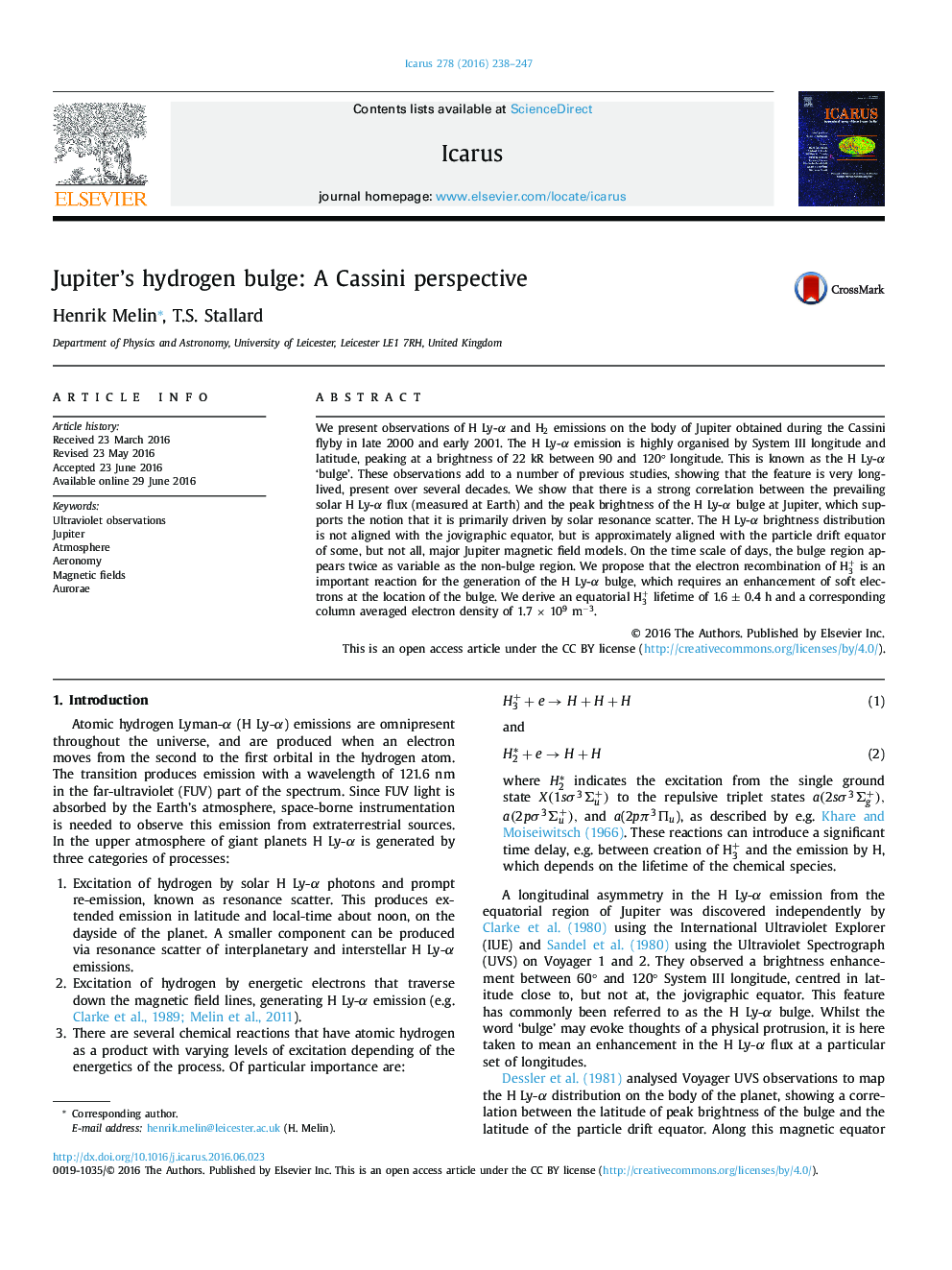| کد مقاله | کد نشریه | سال انتشار | مقاله انگلیسی | نسخه تمام متن |
|---|---|---|---|---|
| 8134870 | 1523512 | 2016 | 10 صفحه PDF | دانلود رایگان |
عنوان انگلیسی مقاله ISI
Jupiter's hydrogen bulge: A Cassini perspective
ترجمه فارسی عنوان
پودر هیدروژن مشتری: دیدگاه کاسینی
دانلود مقاله + سفارش ترجمه
دانلود مقاله ISI انگلیسی
رایگان برای ایرانیان
کلمات کلیدی
موضوعات مرتبط
مهندسی و علوم پایه
علوم زمین و سیارات
علوم فضا و نجوم
چکیده انگلیسی
We present observations of H Ly-α and H2 emissions on the body of Jupiter obtained during the Cassini flyby in late 2000 and early 2001. The H Ly-α emission is highly organised by System III longitude and latitude, peaking at a brightness of 22 kR between 90 and 120° longitude. This is known as the H Ly-α 'bulge'. These observations add to a number of previous studies, showing that the feature is very long-lived, present over several decades. We show that there is a strong correlation between the prevailing solar H Ly-α flux (measured at Earth) and the peak brightness of the H Ly-α bulge at Jupiter, which supports the notion that it is primarily driven by solar resonance scatter. The H Ly-α brightness distribution is not aligned with the jovigraphic equator, but is approximately aligned with the particle drift equator of some, but not all, major Jupiter magnetic field models. On the time scale of days, the bulge region appears twice as variable as the non-bulge region. We propose that the electron recombination of H3+ is an important reaction for the generation of the H Ly-α bulge, which requires an enhancement of soft electrons at the location of the bulge. We derive an equatorial H3+ lifetime of 1.6 ± 0.4 h and a corresponding column averaged electron density of 1.7 à 109 mâ3.
ناشر
Database: Elsevier - ScienceDirect (ساینس دایرکت)
Journal: Icarus - Volume 278, 1 November 2016, Pages 238-247
Journal: Icarus - Volume 278, 1 November 2016, Pages 238-247
نویسندگان
Henrik Melin, T.S. Stallard,
